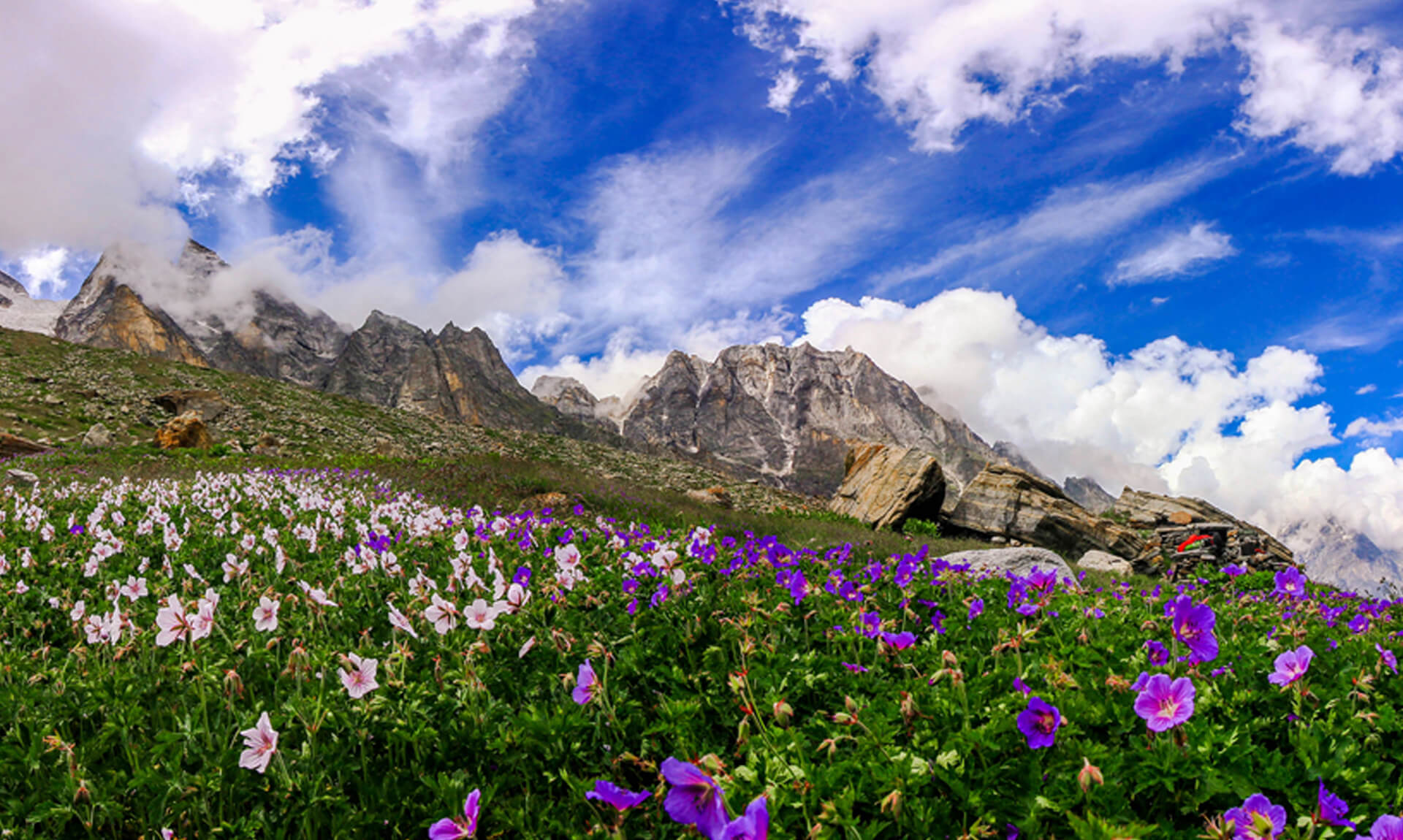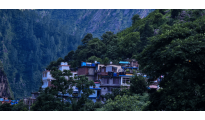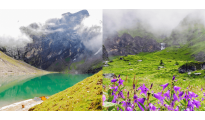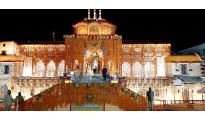Start your journey early in the morning from New Delhi to Rishikesh, which is approximately 240 kilometers away and takes around 6-7 hours by road.
Upon reaching Rishikesh, check into your accommodation and relax for a bit.
In the evening, you can explore the town, visit the famous Ganga Ghats, attend the Ganga Aarti ceremony, or indulge in some adventure activities like river rafting or bungee jumping, depending on your preference.
Overnight stay in Rishikesh.
After breakfast, proceed to Joshimath, which is about 250 kilometers away from Rishikesh and takes around 8-9 hours to reach by road.
The drive from Rishikesh to Joshimath offers scenic views of the Himalayas, lush green valleys, and winding roads.
Upon reaching Joshimath, check into your accommodation and rest for the day.
Overnight stay in Joshimath.
After an early breakfast, drive to Govindghat, which is about 20 kilometers from Joshimath.
From Govindghat, start your trek to Ghangaria, the base camp for the Valley of Flowers trek. The trek from Govindghat to Ghangaria is approximately 14 kilometers and takes around 4-6 hours, depending on your pace.
Enjoy the picturesque views of the Himalayas, dense forests, and gushing rivers along the trekking route.
Upon reaching Ghangaria, check into your accommodation and relax for the evening.
Overnight stay in Ghangaria.
Today, embark on a day trip to the Valley of Flowers National Park.
Start early in the morning to make the most of your time in the valley. The trek from Ghangaria to the Valley of Flowers is around 5 kilometers and takes about 3-4 hours one way.
Spend the day exploring the breathtaking landscapes, colorful flowers, and diverse flora and fauna of the valley.
After exploring the valley to your heart's content, trek back to Ghangaria by late afternoon.
Overnight stay in Ghangaria.
After breakfast, trek back to Govindghat from Ghangaria.
From Govindghat, drive back to Rishikesh.
Upon reaching Rishikesh, check into your accommodation and unwind after the trek.
Overnight stay in Rishikesh.
After breakfast, bid farewell to Rishikesh and start your journey back to New Delhi.
The drive from Rishikesh to New Delhi takes around 6-7 hours.
Arrive in New Delhi by late afternoon or evening, concluding your memorable trip to the Valley of Flowers National Park.
Price On Request
Enquire now for best rate

International
Why Vacations Dreamz
Memorable Experiences
Over more than 10000+ trusted reviews
Best Price Guaranteed
Dreamz offer an affordable and best price guaranteed to its customer.
Around the Globe Services
Dreamz have best activities all over India as well as across the globe so you don't miss the best things to do anywhere.
Love to Hear 24x7x365
Dreamz always keen to love to support /hear its customer 24x7x364 so that you have a hassle free experience.



